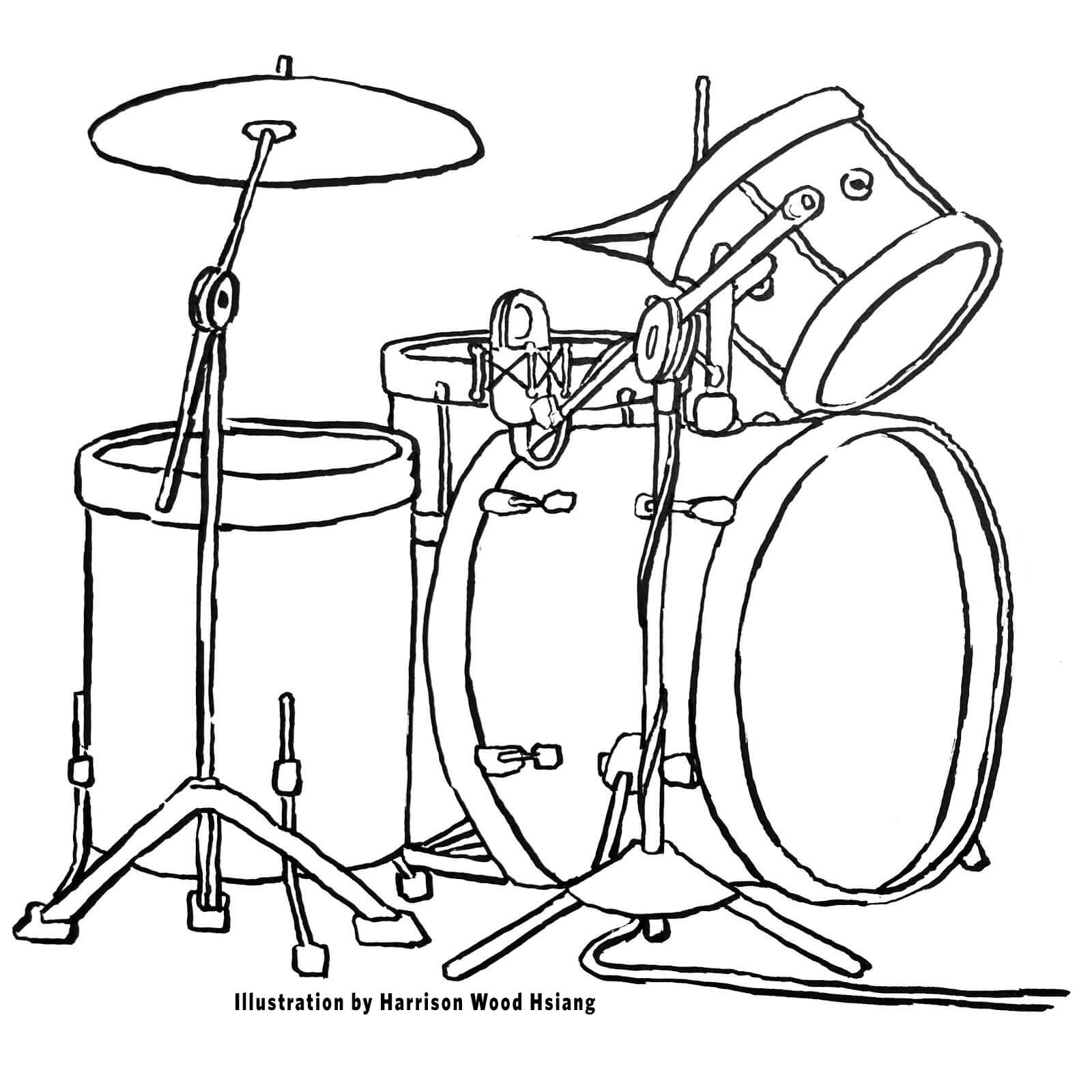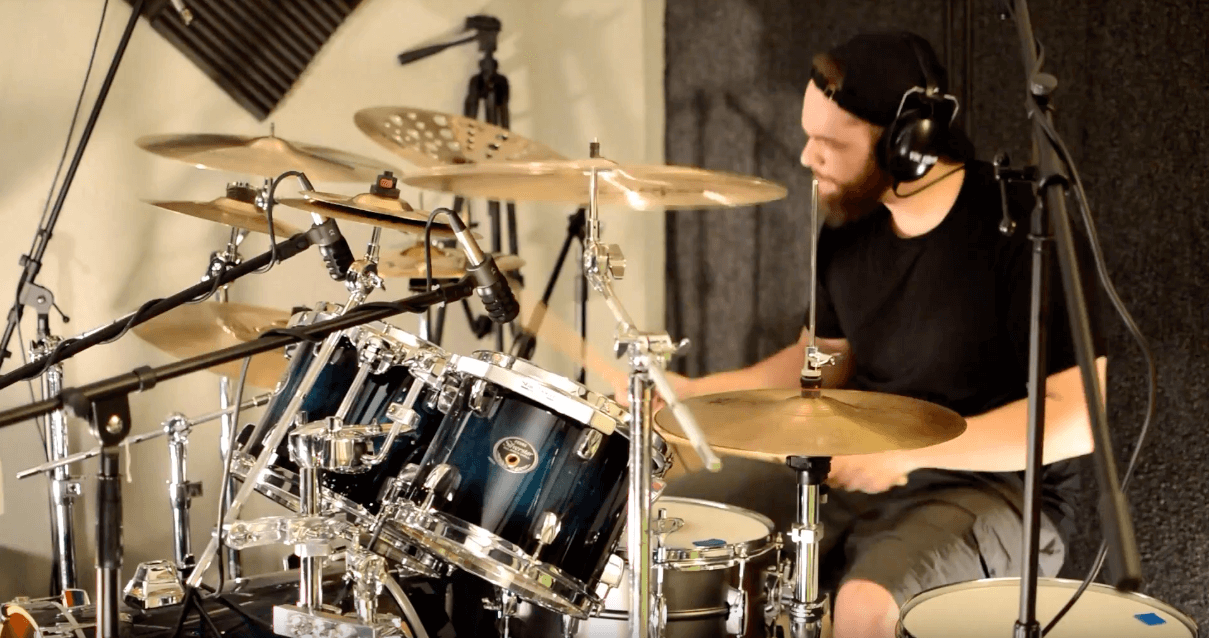
Part 1: Drums
I record all my music myself in my two-bedroom apartment. These days, I’ve assembled a pretty complete home studio set-up, but in the early days, that wasn’t the case. Despite the fact that we didn’t know what we were doing, and the only mics we had access to were SM57s — we still managed to produce polished, competitive recordings.
For most home recording artists, the major bottleneck is the drums. Drums are tricky enough to record in a conventional studio setting; you have multiple sources to balance while somehow capturing a full and detailed picture of the kit. In a home recording setting, this becomes even more difficult, as you have to account for small, imperfect recording spaces and limited mic set-ups.
These are some of the things I’ve learned along the way.
Get the best sound you can
As with any recording, it’s important to get the best sound you can in the room first and foremost. The idea here is the better your source material is, the easier and more naturally it can be enhanced after the fact.
The number one factor in producing a great recording is having a great performance. The best thing you can do for your recordings is have a talented, well-practiced drummer on a good-sounding kit. It’s worth renting or borrowing a better instrument or space if you can.
If you can’t, there are steps you can take to make the most of what you’ve got. Take your time tuning the drums; if there are nasty resonances you can’t tune out, muffle them with tape or old t-shirts — it’s really easy to take the life out of a sound with surgical EQ, so we want to do what we can now to minimize the need for that later.
Likewise, you can control the sound of the room by moving furniture around and hanging moving blankets — which you can pick up at a hardware store for only a few bucks — to break up reflective surfaces. Take your time finding the best-sounding spot in the room and position the kit at an angle to the walls so the sound isn’t just bouncing straight back at you.
Work within your limitations
The resources we have at hand determine how far we can push our sound. Sometimes, if you have limited mics at your disposal, a tight, punchy mono drum sound will trump a thin, anemic stereo sound.
You can achieve a great — full, detailed, balanced — drum sound using just one mic. This will work with any mic with a cardioid polar pattern, like the Shure SM57, but it especially rewards faster, more detailed condenser mics. The mic is positioned over the inside hoop of the kick drum, facing the snare. A characteristic of the cardioid polar pattern is the aptly named proximity effect, in which the low-frequency information is exaggerated as you get closer to the source.

This placement harnesses that effect to our favor, beefing up the body of the snare and the kick. We can control the volume of the kick by changing the height of the mic relative to the drum; likewise, we can control the volume and tone of the snare by changing the angle of the mic. The balance of the kit is preserved, as the mic is positioned between the cymbals and toms — although they are slightly off-axis, giving preference to representation of our most important elements, the kick and the snare.
This single mic–technique gives a fantastically fat, punchy mono drum sound. Even better, it takes EQ and compression extremely well, as the single mic eliminates the need to worry about phase. Adding a mono overhead to this set-up can help to bring out a more detailed picture of the whole kit.
Do whatever you can to get the best sound
Sometimes a mono drum sound just won’t cut it. This technique involves augmenting the mic set-up (above) using samples, but in such a way that is transparent and retains the nuance and character of a live drum performance.
Our one-/two-mic set-up above is providing us with a strong mono image of the kit. The stereo image is going to come from panned samples to augment the toms, providing that sense of space. But to do that, we need a way to trigger those samples.
The way we achieve this is with some sort of external recording device — for example, a smartphone, although anything with a mic will do. The quality of the audio isn’t important, as it won’t be audible in the final mix. This audio is solely to trigger the samples — just get them as close to each tom as possible and try to limit the bleed from other drums.
Have the drummer count off loudly — maybe against the rim of the toms, so it’s especially obvious — as this audio isn’t synced to the rest of our recording and will need to be aligned by hand in your DAW.
From there, it’s simply a matter of sample-replacing the phone audio with a complementary sample, something that’s not too different from the actual live drum sound. You may have to use some combination of gating and EQ to eliminate bleed from other drums. Once you have your sample-replaced tracks, slowly raise the faders to blend them in with the single-mic picture of the kit.
Try to find the sweet spot, where the samples are adding detail and weight but not overpowering the single-mic audio; it can be tempting to lean toward the more “perfect” sound of the sample but remember that the samples are just here to add a little extra push to the solid foundation of our mono recording. If the performance is particularly dynamic, you can duplicate that in the sample-replaced tracks using an expander sidechained to the phone audio that’s triggering the samples. By panning our “tom” (sample) tracks to their appropriate positions in the stereo image, we can convincingly fake stereo drums in the mix — all with a single mic! And despite the use of samples, the performance won’t feel canned or lifeless. The single mic captures the dynamic detail of the live performance, while the samples add body and depth.
This technique is neither pretty nor by-the-books, and it takes time, but that’s the price of a low-budget drum sound that punches above its weight.
